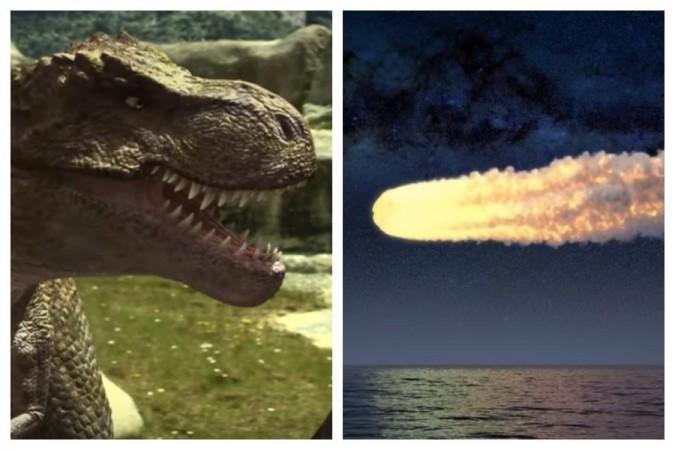It was around 66 million years ago that a giant asteroid measuring 6 miles wide hit the earth with its deadly fury and resulted in the extinction of dinosaurs. The asteroid event also triggered a series of cataclysmic events, and earth witnessed a mini ice age for several years due to the presence of thick debris in the atmosphere. Now, scientists have apparently found the origin of this asteroid that changed the entire fate of the blue planet.
The origin of the giant asteroid unveiled
According to a new study report, the rogue space body that hit planet earth was a giant dark primitive asteroid from the outer reaches of the solar system's main asteroid belt located between Mars and Jupiter. It should be noted that this region in the solar system is home to several asteroids, with a chemical makeup that makes them appear darker due to less reflection of light when compared to other types of asteroids.

"I had a suspicion that the outer half of the asteroid belt, that's where the dark primitive asteroids are — may be an important source of terrestrial impactors. But I did not expect that the results would be so definitive," said David Nesvorný, a researcher from the Southwest Research Institute in Colorado who led the study.
More details about the devastating asteroid
Crucial details about this giant asteroid were obtained from Chicxulub crater, a 90-mile-wide circular scar in Mexico's Yucatan Peninsula left by the object's collision. Geochemical analysis of the crater has suggested that the asteroid was part of a class of carbonaceous chondrites, that have a relatively high ratio of carbon, which were apparently formed during the early years of the solar system.
Earlier, scientists believed that this rogue body came from a family of asteroids from the inner part of the main asteroid belt, but further observations suggested that they didn't have the right composition.
Nesvorny also suggested that the earth could face another asteroid in the future that may come from the dark zone of rogue space bodies.
"We find in the study that some 60% of large terrestrial impactors come from the outer half of the asteroid belt ... and most asteroids in that zone are dark/primitive. So there is a 60% — 3 in 5 — the probability that the next one will come from the same region," Nesvorny told Live Science.










![Happy Diwali 2025: Alia Bhatt gets emotional as she celebrates last Diwali In Vaastu with Ranbir Kapoor and Raha [see inside photos of Vaastu ]](https://data1.ibtimes.co.in/en/full/823150/happy-diwali-2025-alia-bhatt-gets-emotional-she-celebrates-last-diwali-vaastu-ranbir-kapoor.jpg?w=220&h=138)


